Abstract
1. The dose-response relationships of insulin stimulation of lipogenesis and inhibition of lipolysis were studied simultaneously by using rat adipocytes to determine whether these different effects of insulin are mediated through the same or different sets of receptors. 2. The sensitivity (defined as the concentration of insulin required to produce a half-maximal effect) of the stimulated lipogenic response to insulin was not significantly different from the sensitivity of the anti-lipolytic response to insulin. The addition of different adrenaline and glucose concentrations did not alter the half-maximal concentration of insulin required to inhibit lipolysis. 3. The specificities of the lipogenic and antilipolytic responses were studied by using insulin analogues. The sensitivities of the lipogenic and anti-lipolytic responses were the same for five chemically modified insulins and hagfish insulin, which have potencies compared with bovine insulin of between 3 and 90%. 4. Starving rats for 48h significantly increased the sensitivities of both the antilipolytic and lipogenic responses to insulin, but the changes in the sensitivities of both lipogenesis and anti-lipolysis returned to that of fed rats. 5. We conclude that insulin stimulates lipogenesis and inhibits lipolysis over the same concentration range. These observations provide powerful evidence that the different effects of insulin are mediated through the same set of receptors.
Full text
PDF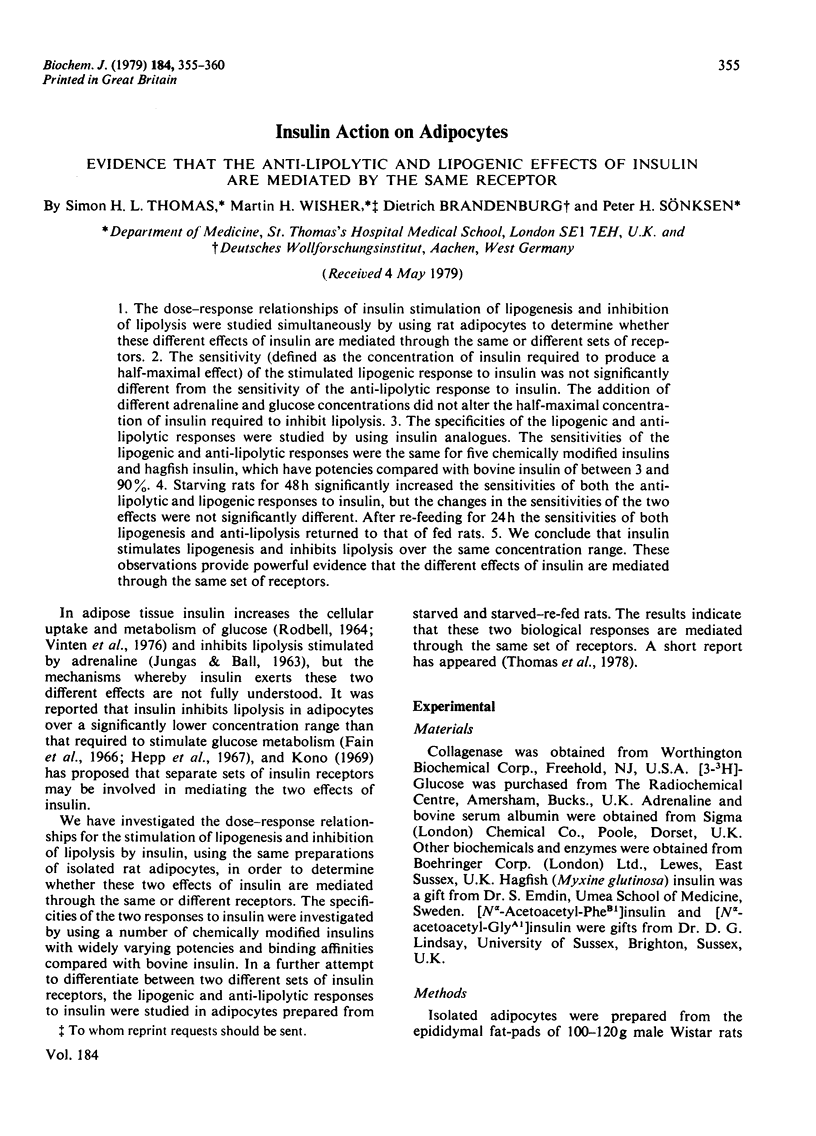
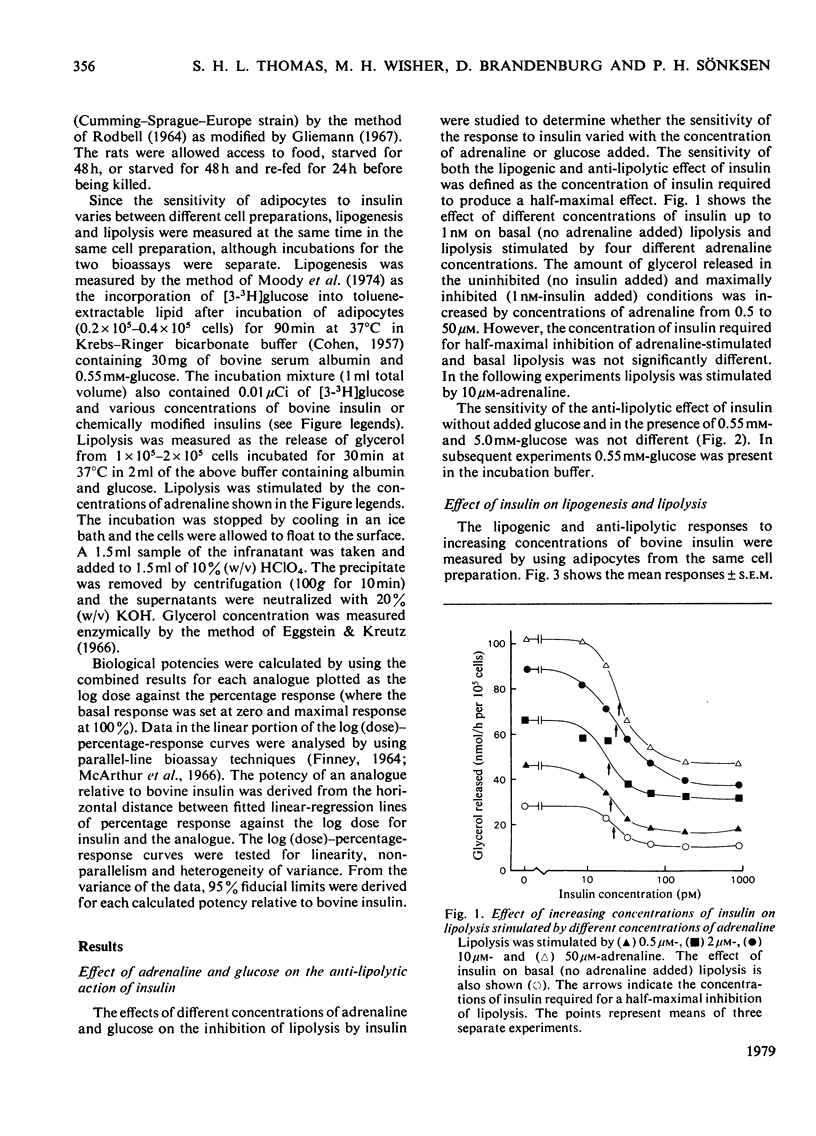
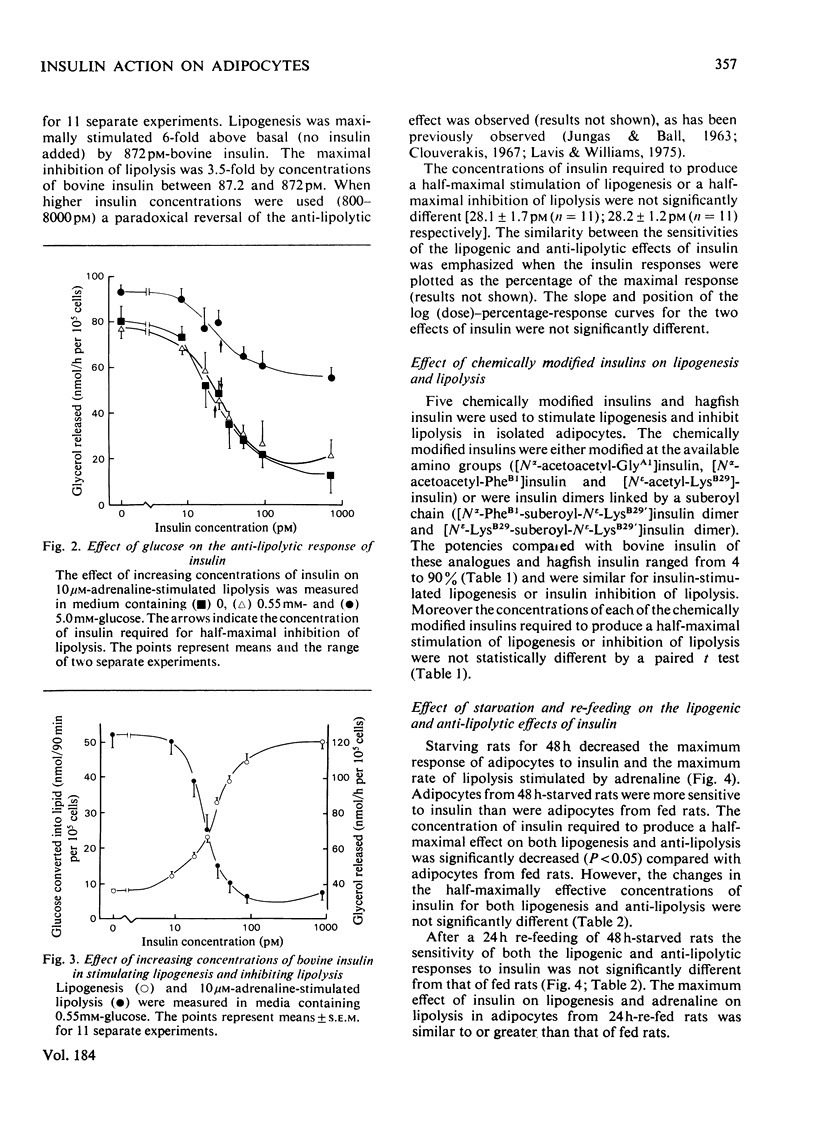
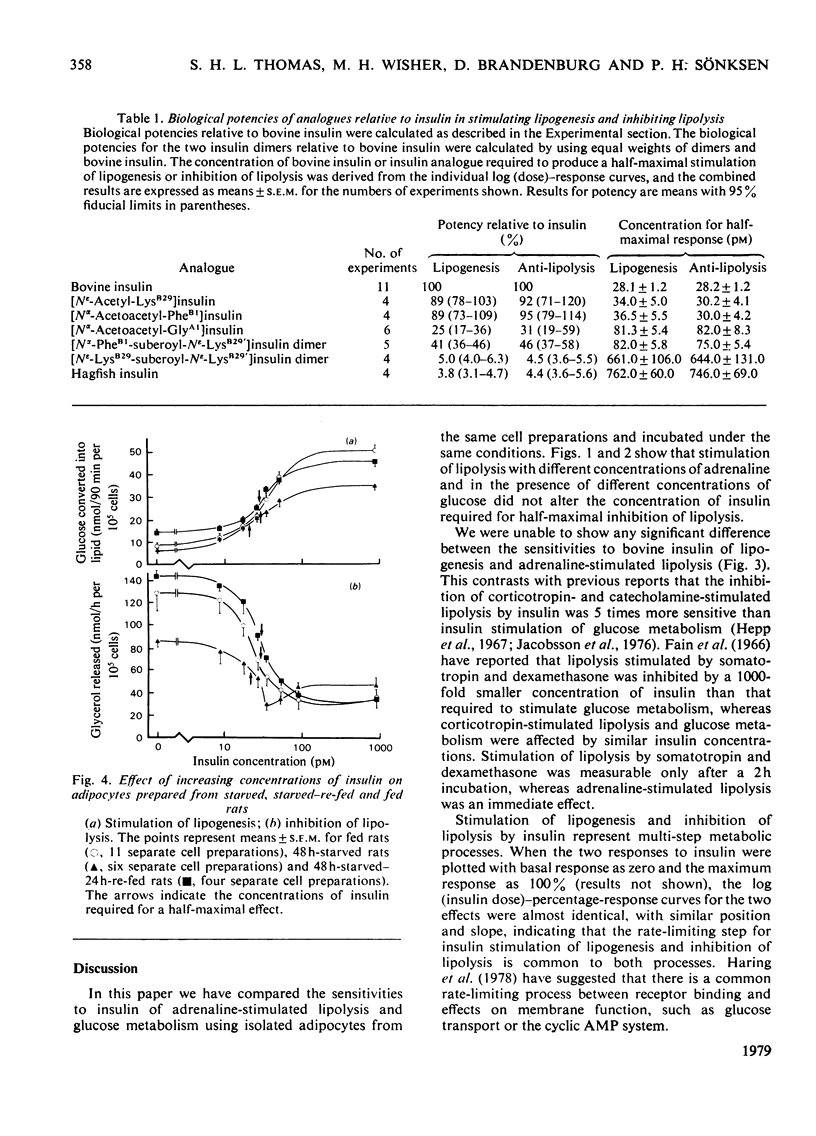
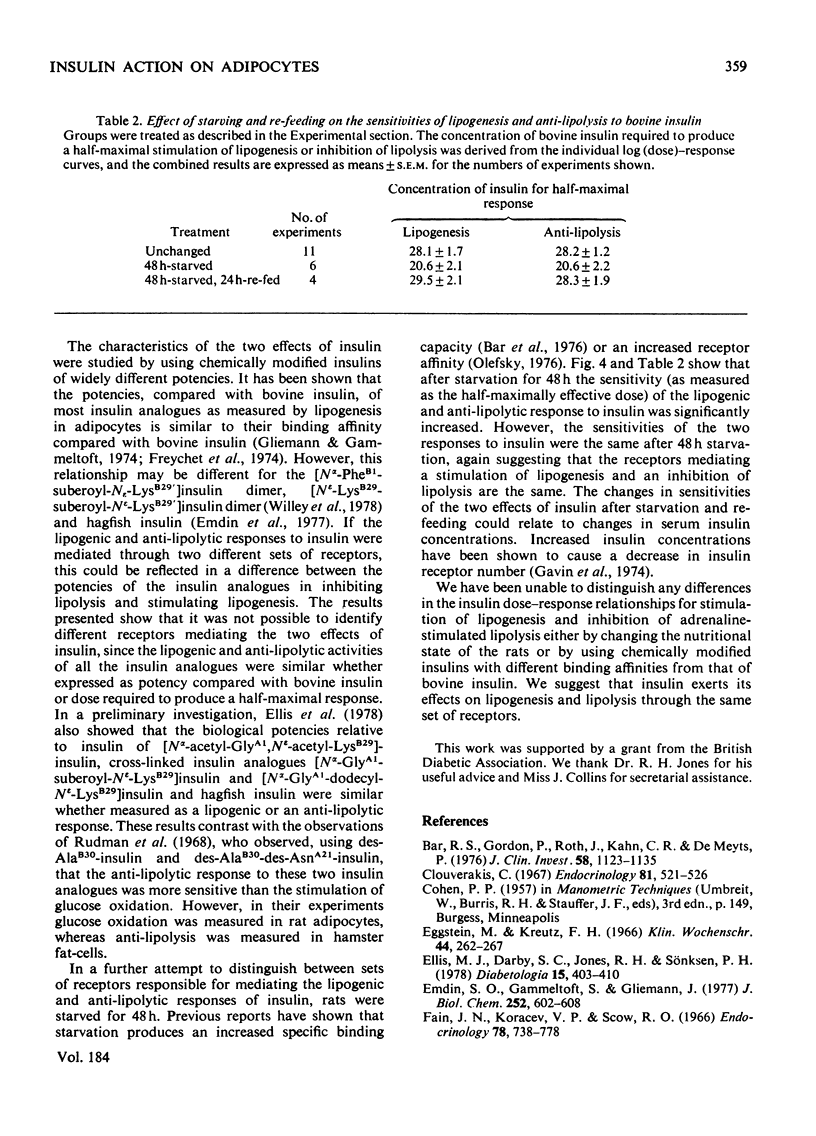
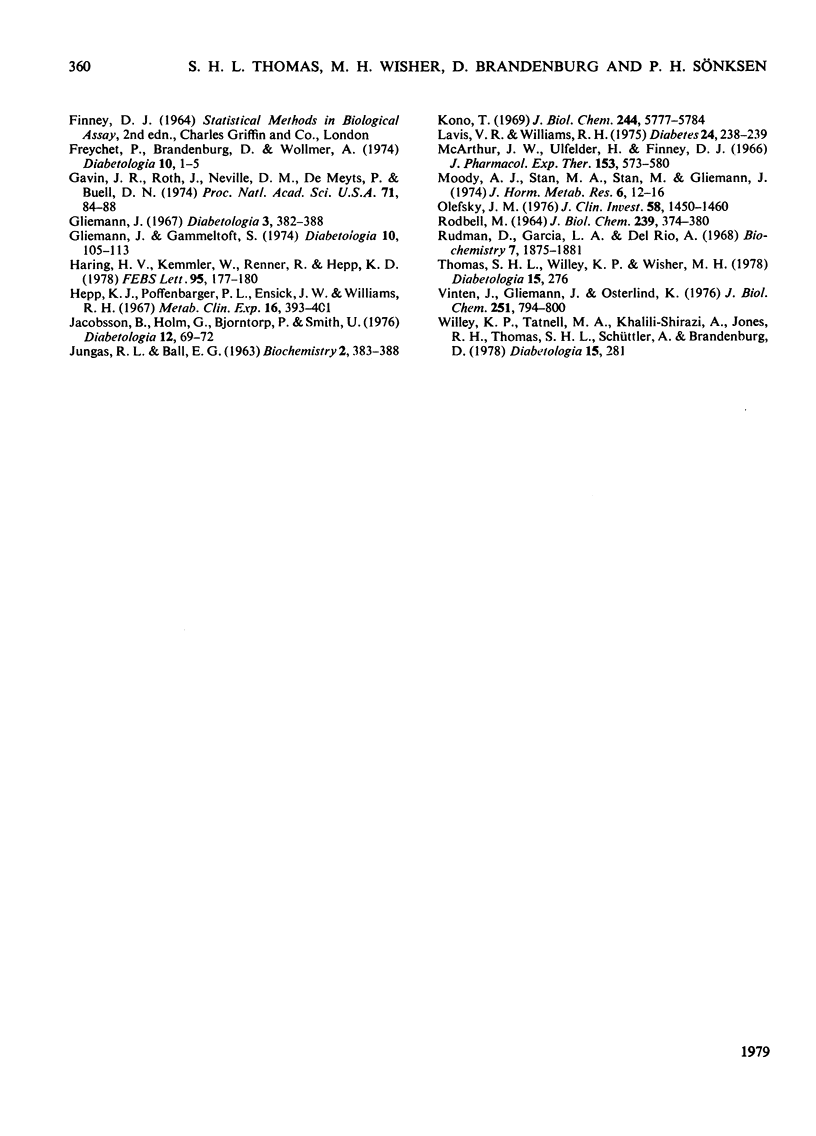
Selected References
These references are in PubMed. This may not be the complete list of references from this article.
- Eggstein M., Kreutz F. H. Eine neue Bestimmung der Neutralfette im Blutserum und Gewebe. I. Prinzip, Durchführung und Besprechung der Methode. Klin Wochenschr. 1966 Mar 1;44(5):262–267. doi: 10.1007/BF01747716. [DOI] [PubMed] [Google Scholar]
- Ellis M. J., Darby S. C., Jones R. H., Sönksen P. H. In vitro bioactivity of insulin analogues: lipogenic and anti-lipolytic potency and their interaction with the effect of native insulin. Diabetologia. 1978 Nov;15(5):403–410. doi: 10.1007/BF01219650. [DOI] [PubMed] [Google Scholar]
- Fain J. N., Kovacev V. P., Scow R. O. Antilipolytic effect of insulin in isolated fat cells of the rat. Endocrinology. 1966 Apr;78(4):773–778. doi: 10.1210/endo-78-4-773. [DOI] [PubMed] [Google Scholar]
- Freychet P., Brandenburg D., Wollmer A. Receptor-binding assay of chemically modified insulins. Comparison with in vitro and in vivo bioassays. Diabetologia. 1974 Feb;10(1):1–5. doi: 10.1007/BF00421406. [DOI] [PubMed] [Google Scholar]
- Gammeltoft S., Gliemann J. Degradation, receptor binding affinity, and potency of insulin from the Atlantic hagfish (Myxine glutinosa) determined in isolated rat fat cells. J Biol Chem. 1977 Jan 25;252(2):602–608. [PubMed] [Google Scholar]
- Gavin J. R., 3rd, Roth J., Neville D. M., Jr, de Meyts P., Buell D. N. Insulin-dependent regulation of insulin receptor concentrations: a direct demonstration in cell culture. Proc Natl Acad Sci U S A. 1974 Jan;71(1):84–88. doi: 10.1073/pnas.71.1.84. [DOI] [PMC free article] [PubMed] [Google Scholar]
- Gliemann J. Assay of insulin-like activity by the isolated fat cell method. I. Factors influencing the response to crystalline insulin. Diabetologia. 1967 Aug;3(4):382–388. doi: 10.1007/BF02342631. [DOI] [PubMed] [Google Scholar]
- Gliemann J., Gammeltoft S. The biological activity and the binding affinity of modified insulins determined on isolated rat fat cells. Diabetologia. 1974 Apr;10(2):105–113. doi: 10.1007/BF01219665. [DOI] [PubMed] [Google Scholar]
- Hepp D., Poffenbarger P. L., Ensinck J. W., Williams R. H. Effects of nonsuppressible insulin-like activity and insulin on glucose oxidation and lipolysis in the isolated adipose cell. Metabolism. 1967 May;16(5):393–401. doi: 10.1016/0026-0495(67)90129-1. [DOI] [PubMed] [Google Scholar]
- JUNGAS R. L., BALL E. G. Studies on the metabolism of adipose tissue. XII. The effects of insulin and epinephrine on free fatty acid and glycerol production in the presence and absence of glucose. Biochemistry. 1963 Mar-Apr;2:383–388. doi: 10.1021/bi00902a035. [DOI] [PubMed] [Google Scholar]
- Jacobsson B., Holm G., Björntorp P., Smith U. Influence of cell size on the effects of insulin and noradrenaline on human adipose tissue. Diabetologia. 1976 Mar;12(1):69–72. doi: 10.1007/BF01221967. [DOI] [PubMed] [Google Scholar]
- Kono T. Destruction and restoration of the insulin effector system of isolated fat cells. J Biol Chem. 1969 Nov 10;244(21):5777–5784. [PubMed] [Google Scholar]
- Lavis V. R., Williams R. H. Comparison of the lipolytic effects of insulin and proinsulin on isolated fat cells. Diabetes. 1975 Feb;24(2):238–239. doi: 10.2337/diab.24.2.238. [DOI] [PubMed] [Google Scholar]
- McArthur J. W., Ulfelder H., Finney D. J. A flexible computer program for the composite analysis of symmetrical and asymmetrical biologic assays of parallel-line type. J Pharmacol Exp Ther. 1966 Sep;153(3):573–580. [PubMed] [Google Scholar]
- Moody A. J., Stan M. A., Stan M., Gliemann J. A simple free fat cell bioassay for insulin. Horm Metab Res. 1974 Jan;6(1):12–16. doi: 10.1055/s-0028-1093895. [DOI] [PubMed] [Google Scholar]
- Olefsky J. M. Effects of fasting on insulin binding, glucose transport, and glucose oxidation in isolated rat adipocytes: relationships between insulin receptors and insulin action. J Clin Invest. 1976 Dec;58(6):1450–1460. doi: 10.1172/JCI108601. [DOI] [PMC free article] [PubMed] [Google Scholar]
- RODBELL M. METABOLISM OF ISOLATED FAT CELLS. I. EFFECTS OF HORMONES ON GLUCOSE METABOLISM AND LIPOLYSIS. J Biol Chem. 1964 Feb;239:375–380. [PubMed] [Google Scholar]
- Rudman D., Garcia L. A., Del Rio A. Effects on mammalian adipose tissue of fragments of bovine insulin and of certain synthetic peptides. Biochemistry. 1968 May;7(5):1875–1881. doi: 10.1021/bi00845a035. [DOI] [PubMed] [Google Scholar]
- Vinten J., Gliemann J., Osterlind K. Exchange of 3-O-methylglucose in isolated fat cells. Concentration dependence and effect of insulin. J Biol Chem. 1976 Feb 10;251(3):794–800. [PubMed] [Google Scholar]


